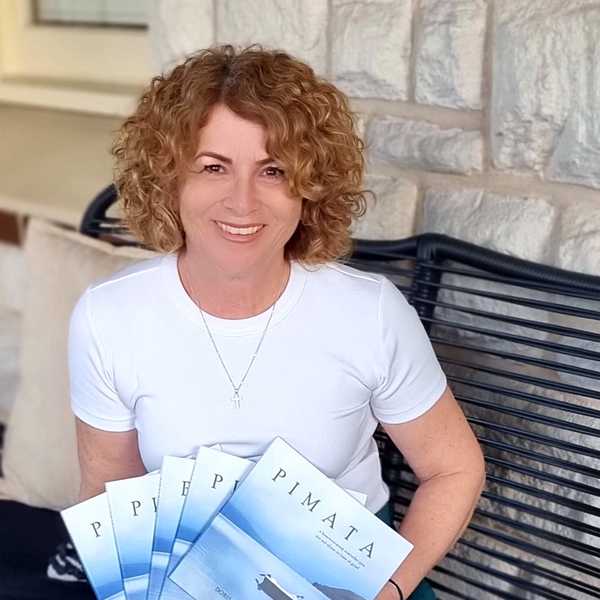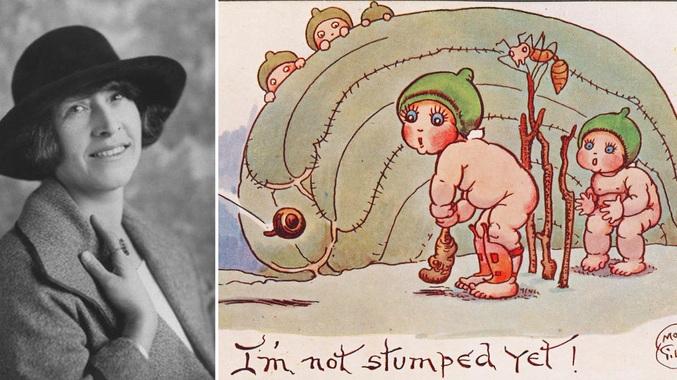The Language of Us
Doris Falidis-Nickolas’ poetry beautifully captures love, loss, and remembrance, offering comfort to...

 Search...
Search...

Bringing the beauty of the Australian bush alive, not only to children, but also to adults, was the special skill of May Gibbs. Born to artists Herbert William Gibbs and Cecilia Rogers in 1877, there seemed no question that Cecilia May Gibbs would be able to draw
The influence of the Australian bush, after her family migrated down under from England when May was four years old, impressed upon her deeply. She is quoted as saying:
'It's hard to tell, hard to say, I don't know if the bush babies found me or I found the little creatures."
Her skill at botanical drawing was recognised when she won her first art prize at the Perth Wild Flower Show in 1892 at just 15 years old. There were many prizes to follow during this decade.
In 1900, May began her art studies in London, England, studying at the Cope and Nichol Art School during the day and taking night classes at the Chelsea Polytechnic Institute. As her studies continued and her work grew, May became an embodiment of the 'New Woman' of the early 20th century. Women had been given the vote and many were making their way outside the kitchen and into the working world.

Along with her contemporary Miles Franklin, May enjoyed financial independence and freedom, travelling overseas and coming in contact with the suffragette movement. While in London in 1910 and 1911, she became involved with the leading suffragette journal The Common Cause, contributing cover designs and illustrations.
When May returned to Australia from London in 1913, she was a full-time, professionally trained female illustrator. She maintained a steady livelihood with commissions from publishers, completing book covers for Angus and Robertson, cover illustrations for prestigious literary magazine The Lone Hand and major New South Wales newspaper Sydney Mail.
The idea of using gumnut babies in her drawings came to May one night and she started experimenting. In late 1913 she was commissioned to illustrate the headpiece of author Ethel Turner's serial The Magic Button in the Sydney Mail. The final work showed a little family of gumnut babies peeping out from their shells.
The gumnut babies would make a second appearance on the cover of the January issue of The Lone Hand. At this time the publisher of the Sydney Mail commissioned May to do 25 covers and the gumnut babies were to make regular appearances. It was her biggest commission to date. The contract was curtailed, however, with the outbreak of the Great War.
As a way of contributing to the war effort May created over 30 designs for postcards during the war years, in the hope people would send them to their soldiers. The cards were included in the Red Cross parcels sent to Australian troops. Her first series included drawings of the Flannel Flower babies and Christmas Bell babies.
Late in 1913, May took out copyright for a gumleaf-shaped bookmark which would become one of Australia's most iconic designs. This is where her entire bushland fantasy world would originate and grow.
By 1916 May had expanded her work to include illustrating her first published book About Us. It had been released in England in 1912 but never published in Australia. This was followed soon after with a five booklet series of Gumnut Babies in 1916, Gum Blossom Babies (1916), Flannel Flowers and other Bush Babies (1917), Boronia Babies (1917) and Wattle Babies (1918).
Then came her best known and first full-length book Snugglepot and Cuddlepie: Their Adventures Wonderful in 1918. It was an instant hit, with the first edition selling over 17,000 copies. Later, in 1940, it was combined with Little Ragged Blossom (1920) and Little Obelia (1921) to form The Complete Adventures of Snugglepot & Cuddlepie. It is still in print today.

In 1919 May married Bertram James Ossoli Kelly, who she had met while on a visit to Perth. He became her manager and they moved to the Sydney harbourside suburb of Neutral Bay. In 1925, they built Nutcote, the house in which May was to continue her work and live the rest of her life.
The 1920s were prosperous for May as she wrote two more books: The Story of Nuttybub and Nittersing (1923) and Two Little Gumnuts: Chucklebud and Wunkydoo (1924). She also wrote popular comic strip Bib and Bub while writing her books Scotty in Gumnut Land (1943), Mr and Mrs Bear and Friends (1943) and her final book, Prince Dande Lion (1953). Bib and Bub was to become Australia's longest running comic strip, syndicated in newspapers across Australia and New Zealand and continued until late 1967.
May received the appointment of Member of the British Empire (MBE) in 1955, as an acknowledgement of her contribution to children's literature in Australia. By 1967, May was 90 years old and had finished her last cartoon. In 1969, on 27 November, May passed away, 30 years after her husband. She was cremated at the Northern Suburbs Crematorium in Sydney. She bequeathed all her copyright to Northcott Disability Services and Cerebral Palsy Alliance. The rest of her estate was left to the United Nations International Children's Emergency Fund.
May's beloved Nutcote was saved from redevelopment and is now a house museum surrounded by the gardens she loved to tend. You can find out more about Nutcote Cottage at www.maygibbs.org.
Tales From The Grave - Uncovering family history from down under By Samantha Elley.
References